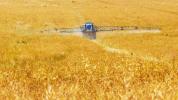H2020 STEPLA PLUS Project: Integrated Livestock Management System
- Type Project
- Status Filled
- Execution 2016 -2018
- Assigned Budget 730.621,5 €
- Scope Europeo
- Main source of financing Horizon 2020
- Project website STEPLA PLUS
Conclusion:
During this second year, we completed all activities as planned and finalized our go-to-market strategy. We can confidently say that we have reached TRL9 and that our product, now called DIGITANIMAL, is ready for commercialization.
WP1 involves adapting STEPLA to monitor other animals such as goats, sheep, horses, and pigs by adapting the platform's hardware and software components. Adaptation to the sheep, goat, and horse markets has been successfully completed. Adaptation to the pig market required a modification to the housing and placement of the device, which is placed on the animal's back with a harness instead of a collar.
WP2 consists of improving the collar's capabilities and developing new sensors that can be integrated into the farm. In this second year, all the new features implemented during the first year (antenna, housing, new sensor detection capabilities) have been tested and refined. In relation to the development of new sensors, a low-cost electronic ear tag was developed during the project. This device can communicate with the collar and other sensors, providing information on the animals' status. Thanks to this device, it is possible to increase the number of monitored animals on a farm.
WP3, which improved the online platform and mobile app, was completed during the first year. We successfully implemented a pilot to integrate stakeholders. This year, we ensured that all developed modules were properly integrated. We optimized our server capacity to provide better service.
WP4 consists of the development of behavioral algorithms to detect anomalies in animals. In this second year, efforts have focused on developing and refining algorithms based on the data collected during the first year. During these 12 months, real-life testing has been a key activity in this WP.
The objective of WP5 is to establish a commercialization plan and update the business plan. This second period focused on laying the groundwork for the market implementation of our solution. The business plan was updated and reviewed by internal and external experts.
WP6 involves project management. During the second year, a special effort was made to adjust expenses to the remaining budget. In this second year, a total of 17 deliverables were submitted according to the project plan. In addition, a financial and technical report was prepared. A financial certificate was generated in collaboration with an external auditor.
In Europe alone, there are more than 650,000 livestock farms on large areas (more than 30 hectares) housing more than 120 million animals (cows, sheep, and goats alone). Livestock farming is a traditional sector with low profit margins, which means farmers need tools to increase their profitability. Furthermore, the world's population is growing and there is a growing demand for meat, making it essential to ensure the quality and health of food.
STEPLA is a service platform consisting of hardware devices (collars) that collect animal data and send it to the cloud via an IoT network; Big Data algorithms that analyze the data from the collars; and cross-platform user interfaces that display the data intuitively. STEPLA's main goal is to help farmers improve their profitability by reducing animal losses, increasing farrowing rates, reducing animal health problems, and improving animal welfare. Thanks to STEPLA, farmers can track the location of their animals, their temperature, their activity level, the distance they've walked, their condition, and more.
Thanks to this project, an initial prototype for cow tracking will be transformed into a commercial solution composed of highly durable and robust devices with high radio frequency performance, activity and temperature sensors, and a long-lasting battery. These devices send information via an IoT communication protocol to the FIWARE-based cloud, where it is processed and analyzed to determine the animals' status.
STEPLA, developed by the Spanish SME MISC International (SensoWave), is the first ICT services platform for the comprehensive management of extensive livestock farms. It offers location, tracking, and traceability capabilities to locate individual livestock in real time.
STEPLA monitors its status in real time, detecting anomalies and facilitating farm management, including meat traceability and the environmental impact of livestock farming activities. STEPLA integrates stakeholders such as veterinarians, suppliers, insurance companies, regulatory authorities, consumers, and all elements of the distribution chain. After being incubated through the acceleration program and completing pilots on several farms in Spain, STEPLA reached its first sales agreement for the beef sector in 2015.
With the SMEInst-2 STEPLA+ project, SensoWave plans to make the necessary adaptations to cover other livestock, focusing on pigs, sheep and goats, and horses, and to include new functionalities (temperature sensors, more complex algorithms based on big data, etc.), in order to increase STEPLA+'s market penetration, becoming the leading solution for European livestock farmers in the coming years. STEPLA+ will reach the commercialization stage in 2018-19, resulting in a 309% return on investment (ROI) over 4 years for SensoWave and will generate 204 new jobs, in addition to having a positive impact on the European livestock sector (also through increased exports) and the well-being of European citizens.
Thanks to the project, we were able to evolve our livestock monitoring and tracking device from a prototype to a cutting-edge, and even more advanced, device. Our device was the first IoT device to monitor livestock living in large areas using a communication protocol designed for IoT like Sigfox. Thanks to the work developed during the second year of the project, our device has also become the first NBIoT device for animal monitoring. In addition, Big Data and machine learning algorithms have been developed using cutting-edge technologies that allow us to detect various animal anomalies, such as heat detection, predator attacks, and more.
During the project, several improvements were made to the device, allowing us to enhance the collar's strength, durability, and radio frequency performance, among other things.
Our project has a significant impact on improving animal welfare and living conditions in rural areas. Our device was designed to monitor and locate livestock living in large, often rural, areas, with the goal of helping farmers increase their productivity and peace of mind. Our solution helps reduce animal losses by monitoring various parameters. A series of interviews with our users revealed that the quality of life of 9 out of 10 users improved thanks to using our solution, and none lost an animal equipped with the STEPLA device. Furthermore, another goal of the STEPLA+ project is to promote the natural welfare of free-ranging animals, which entails a number of social benefits, such as reducing CO2 emissions.
- MANAGEMENT, CONSTRUCTION AND TRADE, INNOVATIVE SOLUTIONS INTERNATIONAL SL (SENSOWAVE)







